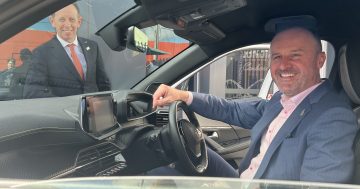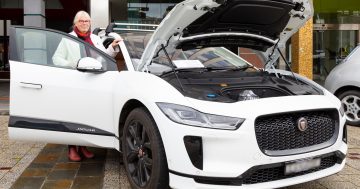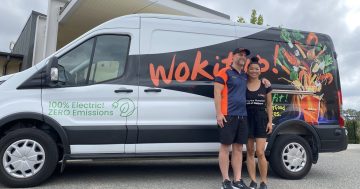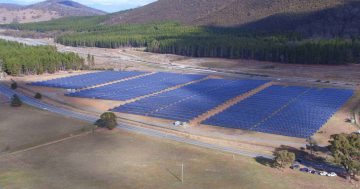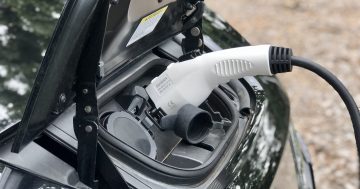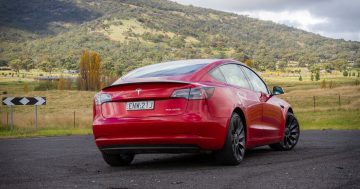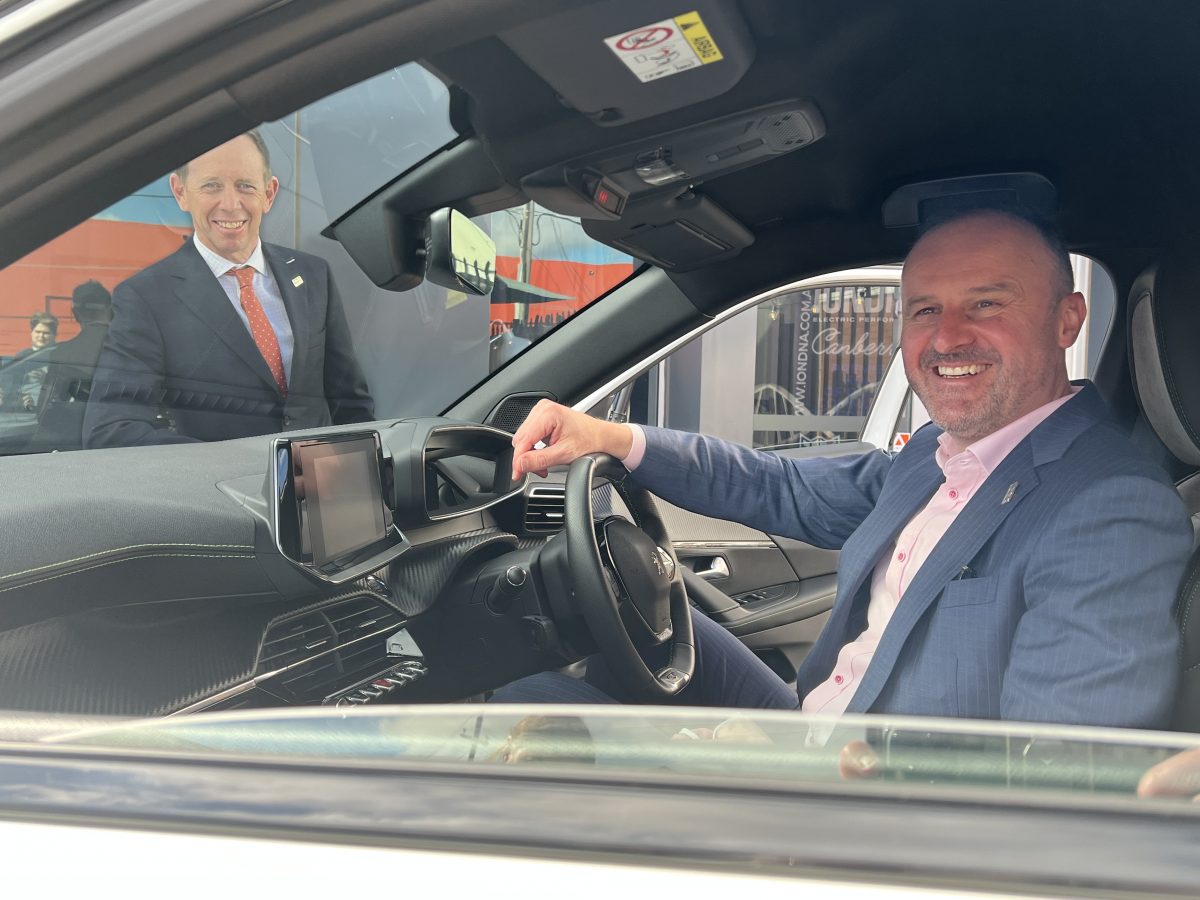
Chief Minister Andrew Barr and Minister for Energy and Emissions Reduction Shane Rattenbury released the Territory’s Zero Emissions Vehicle strategy today (20 July). Photo: Lottie Twyford.
Stamp duty will be scrapped for second-hand zero-emissions vehicles (ZEVs) from August this year and the Territory’s vehicle registration system will be overhauled from a weight-based to an emissions-based system as part of the ACT’s zero-emissions future.
The former could save potential buyers an average of $1600 a year, making switching to a ZEV more enticing.
Chief Minister Andrew Barr and Minister for Energy and Emissions Reduction Shane Rattenbury released the ACT’s full zero emissions vehicles strategy today.
It included a commitment to banning new fossil fuel vehicles from being registered in the ACT from 2035 onwards and prohibiting new fossil fuel cars from being introduced to the taxi or rideshare system by 2030.
The government stressed neither of those bans would force cars already on the road off the road.
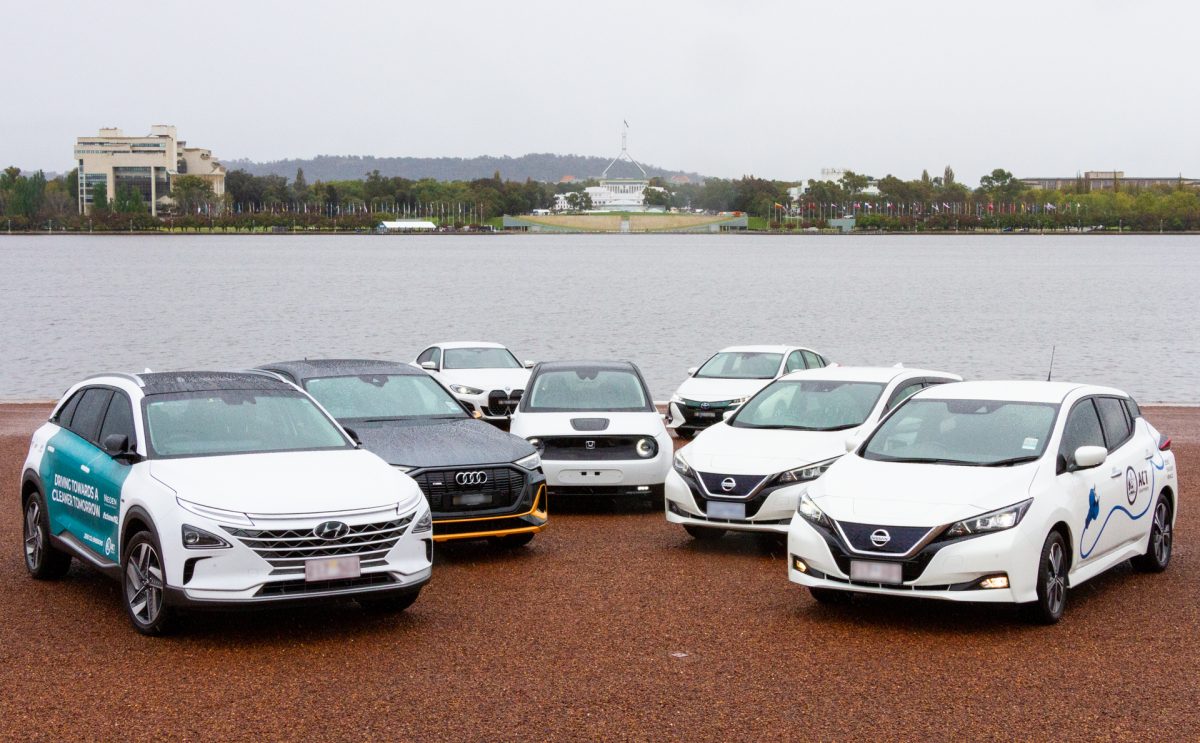
The Territory government will set itself the ambitious target of 80 to 90 per cent of new vehicle sales being zero emissions by 2030. Photo: James Coleman.
The strategy mapped out a path forward to address issues relating to affordability, range anxiety and EV availability, among others.
Alongside extending the stamp duty exemption to second-hand zero-emissions vehicles from August this year, car owners will receive two years of free registration for battery electric and hydrogen fuel cell electric vehicles.
These changes would subsequently be followed by a major overhaul of the Territory’s car registration system which would be underpinned by the principle that the lower your transport emissions, the less you will pay.
Currently, registration fees in the Territory are based on the weight of the vehicle, but as electric vehicles are heavier than fossil-fuel ones because of the size of the battery, Mr Barr said this would need to be adjusted as a “fundamental” element of the reform.
He deflected questions about whether this change would be fair to Canberrans who couldn’t yet afford to make the transition to a ZEV, saying equity could be ensured.
He said the government would lead with incentives first before moving to further reform the registration system.
Mr Barr foreshadowed it was unlikely stamp duty would return for purchasers of electric vehicles.
People can also access the Sustainable Household Scheme which provides $15,000 in interest-free loans that can be used to purchase electric vehicles. That scheme will continue.
Along with a raft of reforms outlined in the strategy, the government will make changes to the planning rules so apartment buildings must have electric vehicle chargers.
It will also ensure at least 180 publicly accessible electric vehicle chargers are available in the Territory by 2025.
By 2030, it’s forecast the ACT will need more than 500.
Established apartment buildings will also be able to access $2000 to retrofit charging infrastructure if it was not initially installed.
But the government strategy acknowledged that it is going to be complex and time-consuming.
It will also streamline license applications for EV charging stations on public land.
Mr Barr confirmed today there would be a program in place to ensure a legacy of batteries in landfill is not left behind, although the details of that are unknown.
As announced earlier this week, the government has set an ambitious target of 80 to 90 per cent of new light vehicles sold in the ACT being zero-emission vehicles in 2030 before a stricter ban would come into force five years later.
Mr Barr said he believed that commitment was feasible but much work would need to be done in the interim on increasing supply to the market.
Mr Barr said all states, territories and the Commonwealth were working together on ambitious ZEV targets and strategies to make up for what he described as a “decade of lost time under the previous government”.
The Federal Government is in charge of Australia’s vehicle emissions standards.
He noted a program of work was already underway with NSW to ensure charging infrastructure would be in place along the highways in and out of the Territory.
The ACT is committed to net-zero emissions by 2045. Transport currently accounts for the majority (60 per cent) of the Territory’s emissions.












